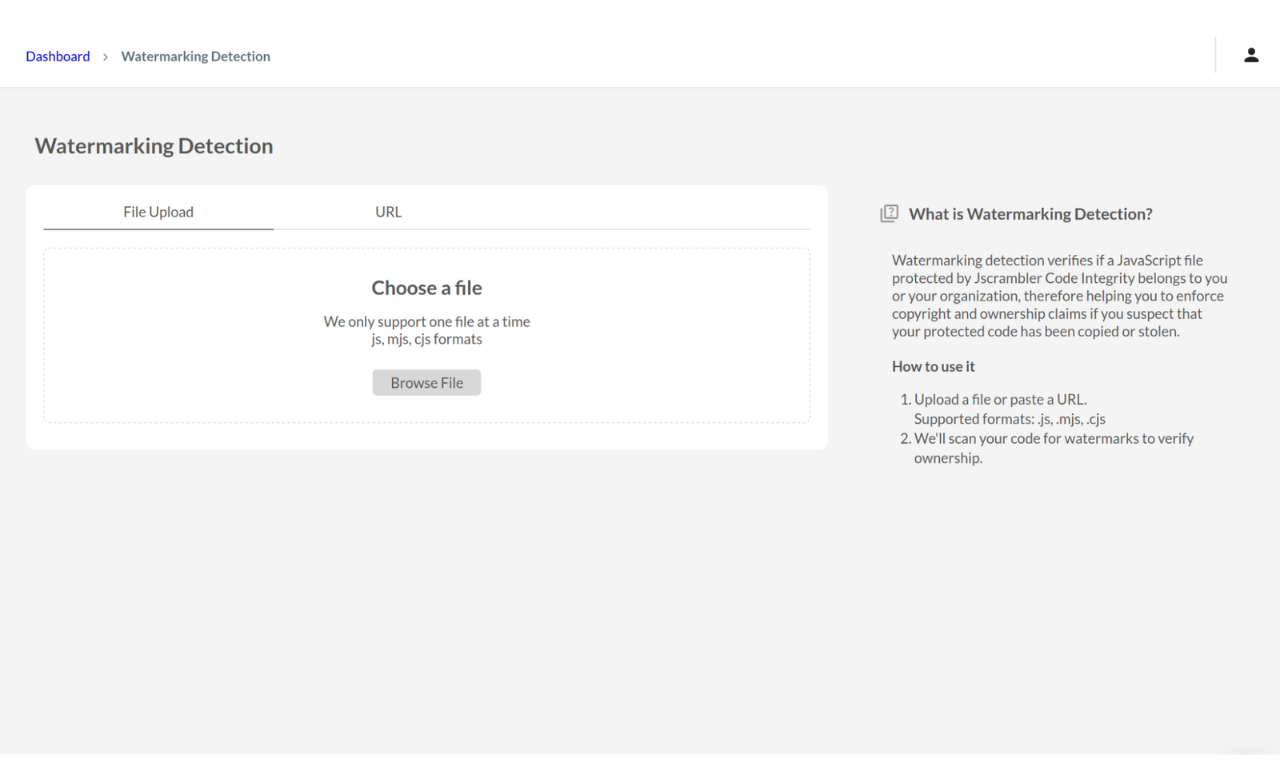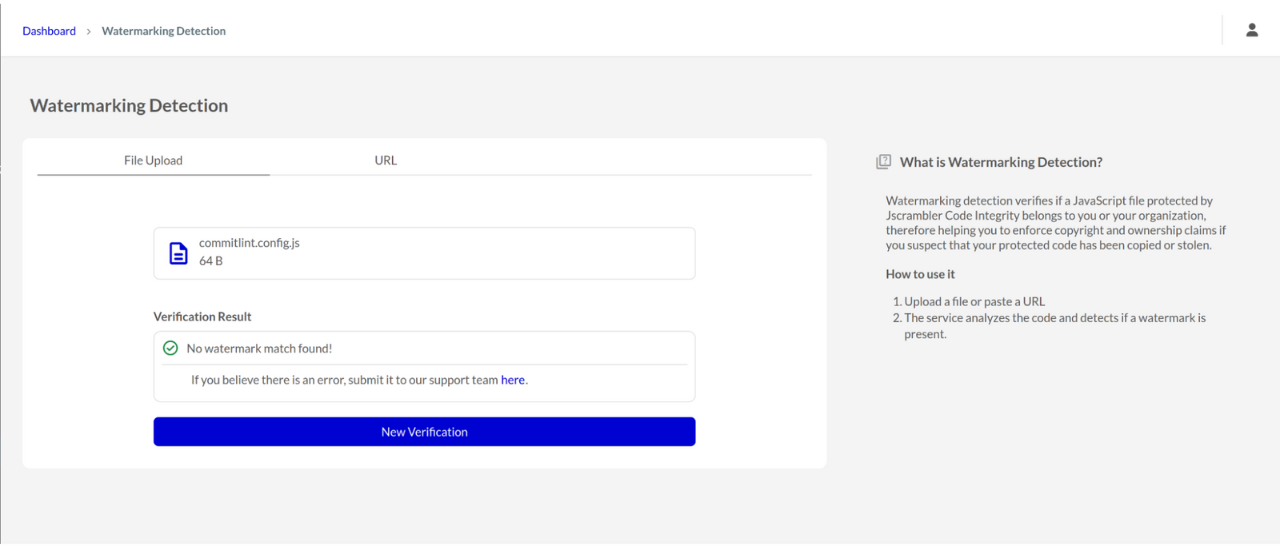Jscrambler 101 - Code Watermarking
July 15th, 2025 | By Jscrambler | 3 min read

Updated on July 15, 2025
Welcome back to Jscrambler 101! A collection of tutorials on how to use Jscrambler to protect your JavaScript. This tutorial covers the Code Watermarking feature, included in the Jscrambler version 8.5.
Introduction
In this article, we’ll explore Code Watermarking, a new Jscrambler feature released in version 8.5. Code Watermarking is a self-service feature that empowers customers to verify ownership of JavaScript code using robust, nearly unremovable watermarks, akin to a digital signature. This feature addresses intellectual property (IP) theft and supports forensic tracing for enterprises.
About the Code Watermarking Protection Feature
How was the feature inspired?
The feature was created to address Jscrambler's customers' need for a self-service verification method. Many users are unaware of embedded watermarks, limiting their ability to address IP theft or investigate leaks in web applications. The feature focuses on self-service verification for JavaScript.
How does the Code Watermarking feature work?
The feature enables users to confirm JavaScript code ownership independently, leveraging watermarks’ signature-like persistence to protect frontend logic and trace code origins without manual support. The “Watermark” UI, as shown in the screenshot, provides an intuitive interface for watermark detection:

It allows users to upload JavaScript files (.js, .mjs, .cjs formats) or input a URL. The system checks for robust, embedded watermarks (already included in protected code) and displays results: “Code belongs to [Organization], protected on [Date]” or “No watermark match found.” If the user disagrees with Jscrambler’s assessment that a piece of code is theirs, even if no watermark was found, they can submit the file for analysis by clicking a link that appears after our response.

Code Watermarking Benefits
Ownership Verification: confirms if suspect JavaScript is yours, akin to verifying a signature, streamlining IP dispute resolution.
IP Theft Deterrence: near-unremovable watermarks discourage copying by ensuring traceability, mirroring a signature’s trust signal.
Legal Evidence: provides signature-like proof of ownership for legal disputes.
Forensic Tracing: traces leaked JavaScript to its source, supporting breach investigations, similar to signatures that identify origins.
Increased Awareness: educate customers about watermarking’s signature-like capabilities.
Conclusion
Code Watermarking offers a robust, signature-like solution to verify JavaScript ownership. By enabling self-service verification within the organization, it delivers immediate value while laying the groundwork for future capabilities, such as automated code scanning, ownership certificates, and AI code attribution. This feature not only strengthens JavaScript security where traditional code signing falls short but also sets Jscrambler apart in a crowded market.
With ongoing customer feedback and planned integrations, Code Watermarking showcases the signature-like robustness of watermarks, emphasizing ownership verification, deterrence, and forensic tracing.
Jscrambler
The leader in client-side Web security. With Jscrambler, JavaScript applications become self-defensive and capable of detecting and blocking client-side attacks like Magecart.
View All ArticlesMust read next
Jscrambler 101 - Anti-Tampering
Explore the Anti-Tampering feature released in Jscrambler version 8.1 to protect your application against tampering attacks.
August 1, 2023 | By | 4 min read
Jscrambler 101 — First Use
Welcome to our 101 tutorials on how to use Jscrambler to protect your JavaScript. In this tutorial, we will teach you how to make your first protection.
September 3, 2024 | By Jscrambler | 8 min read
